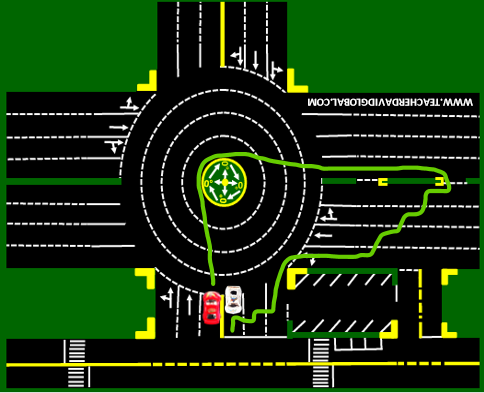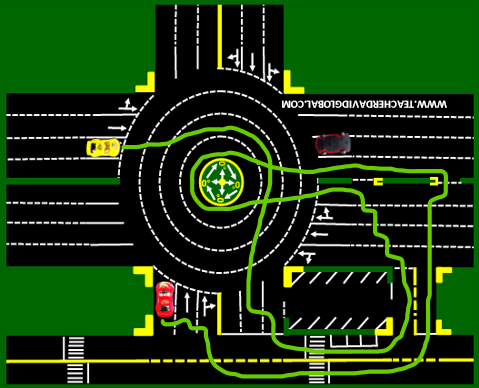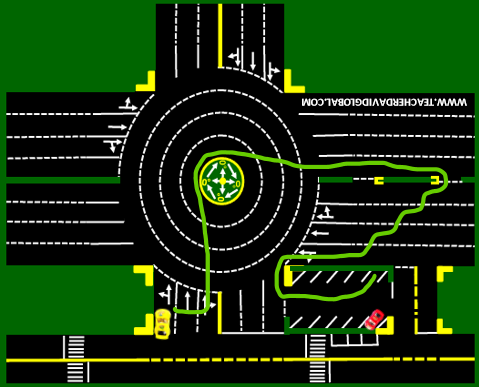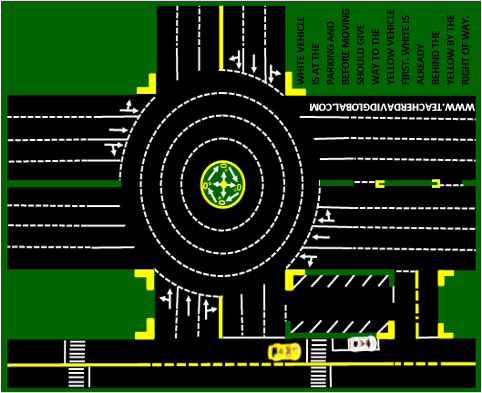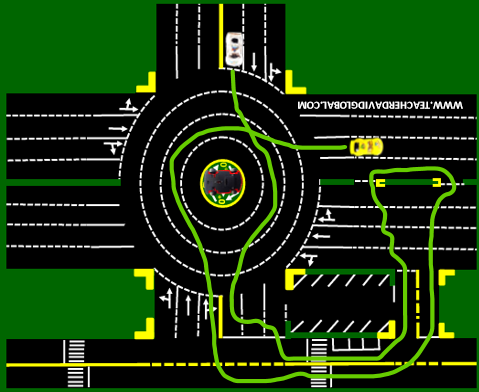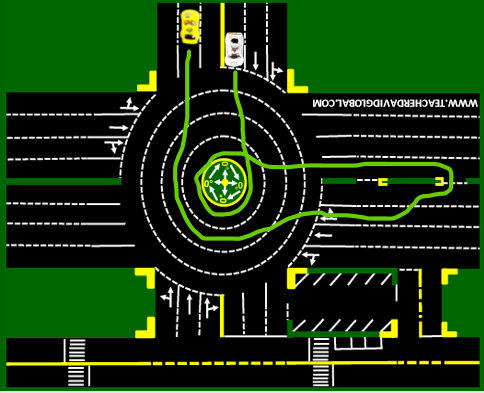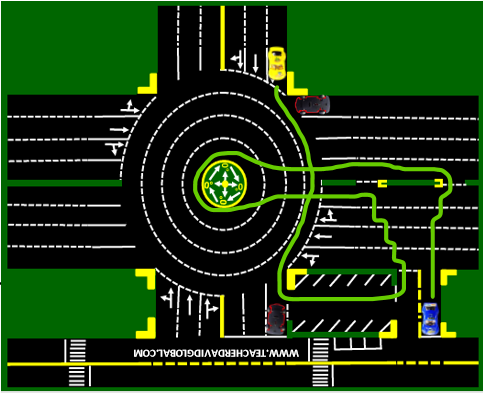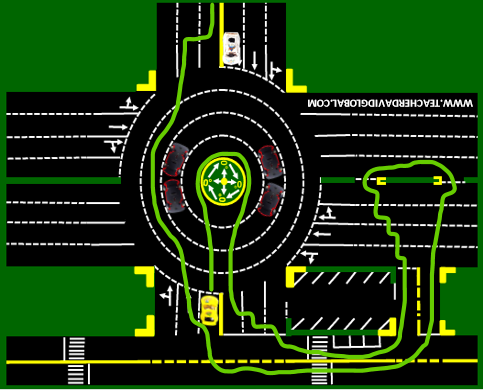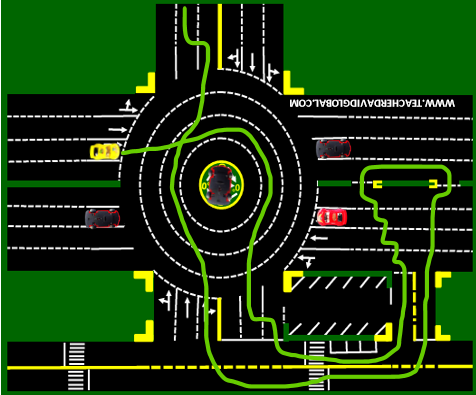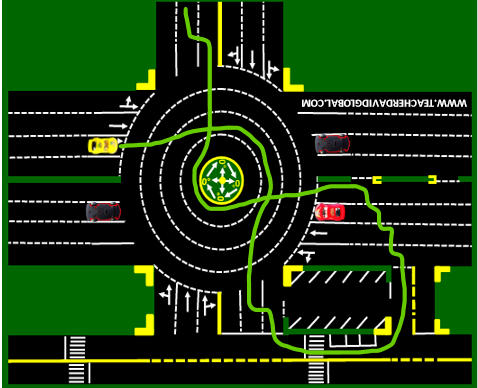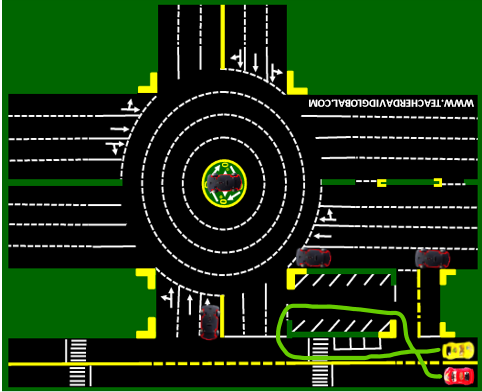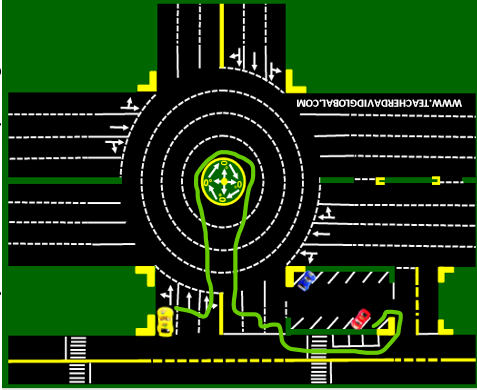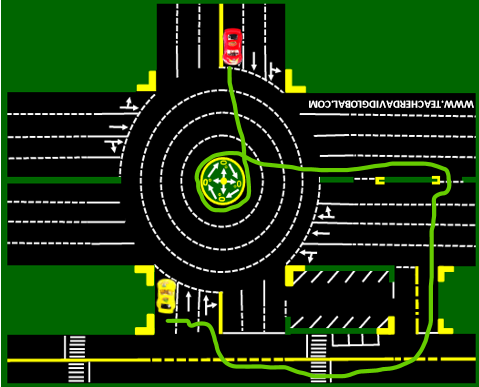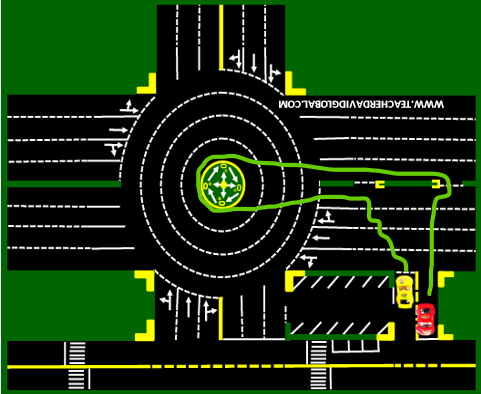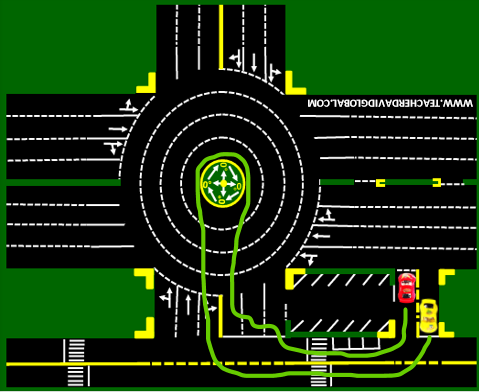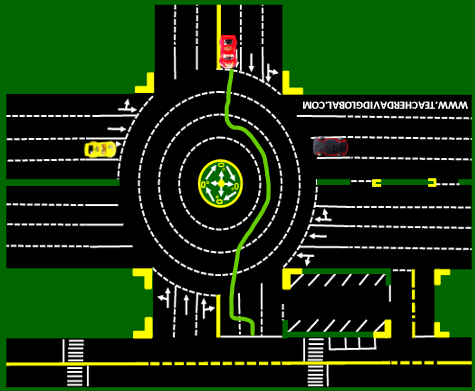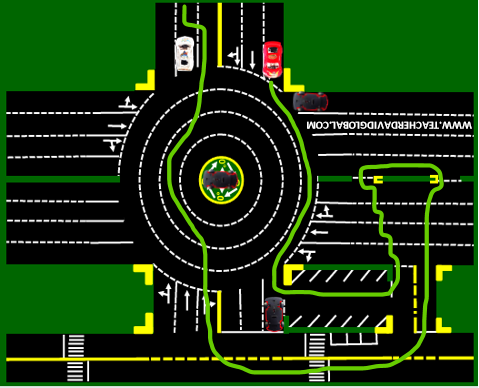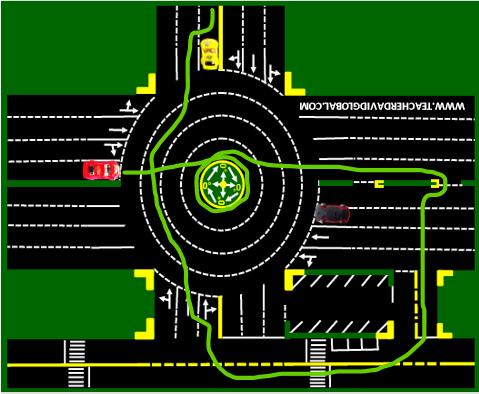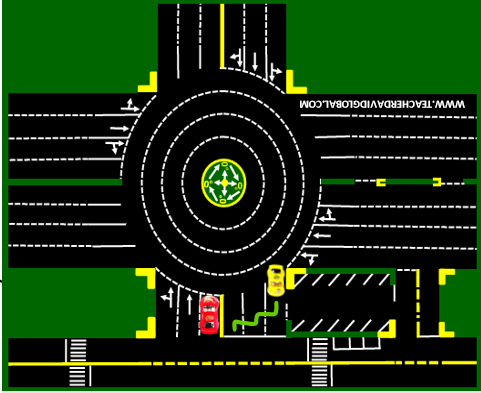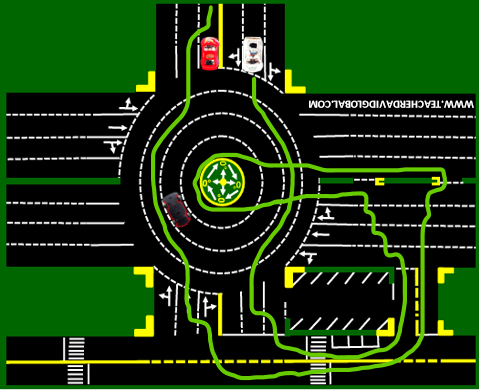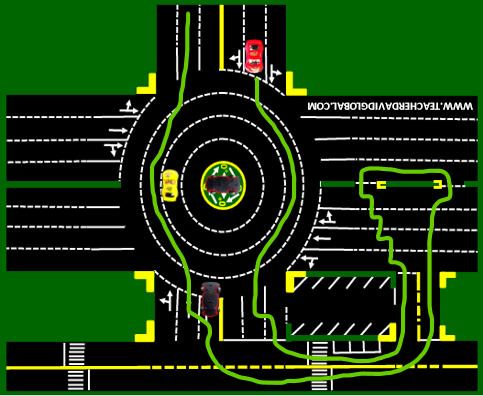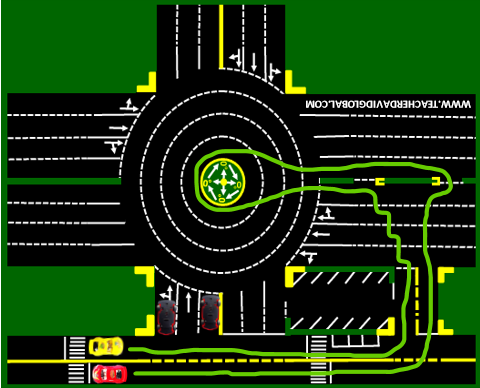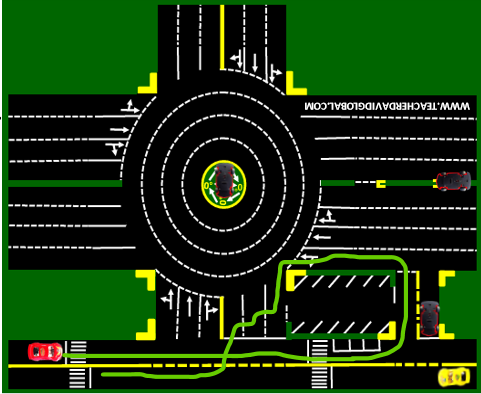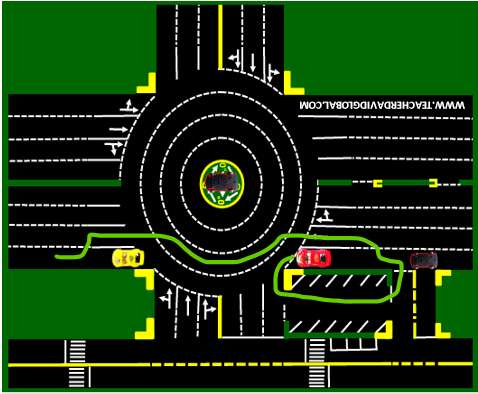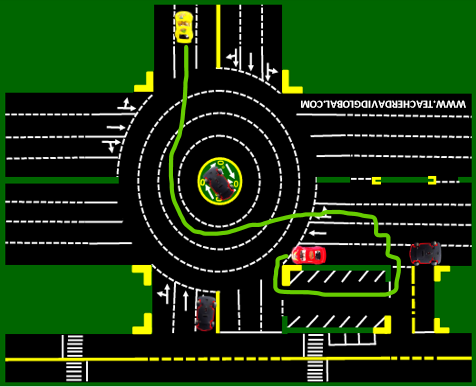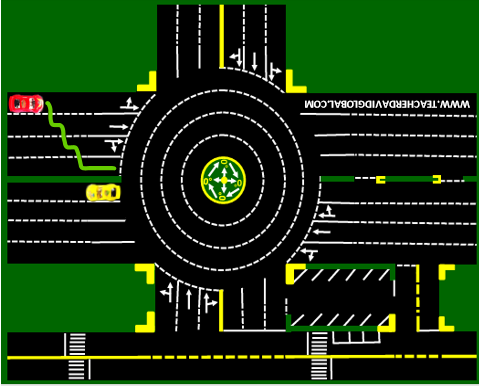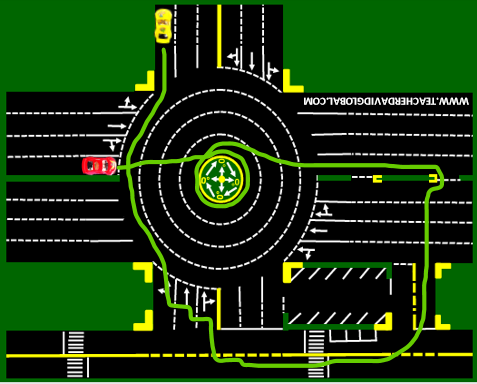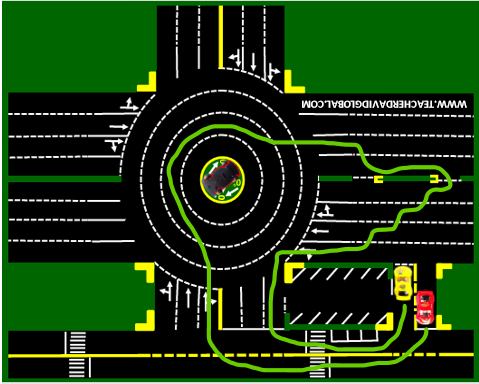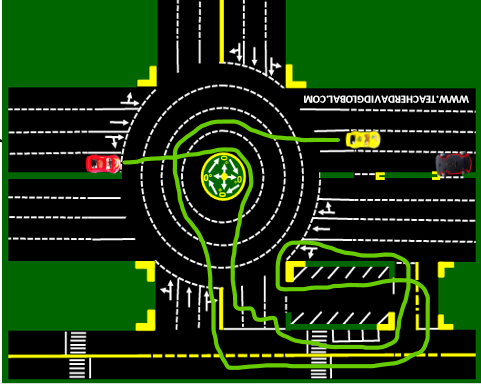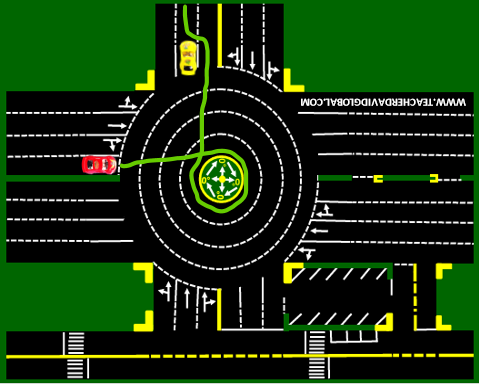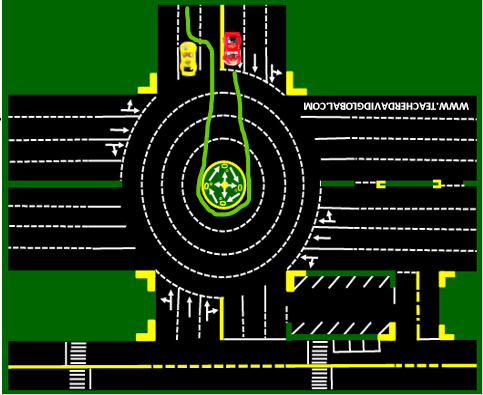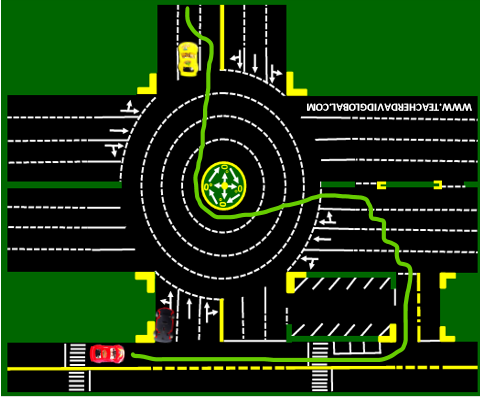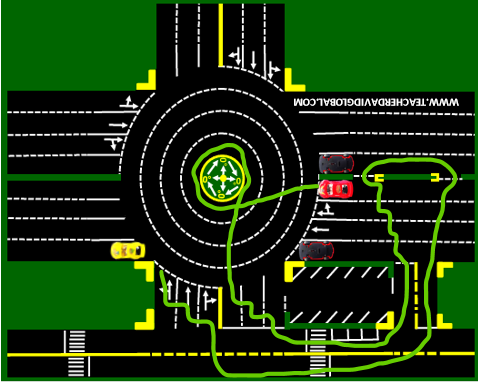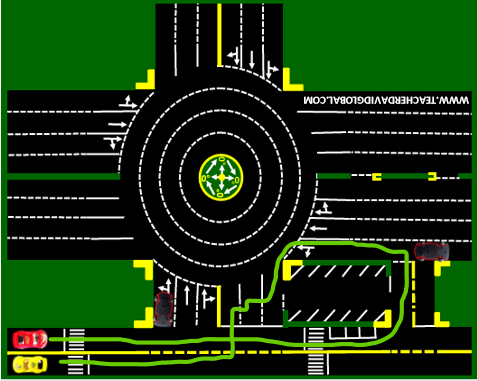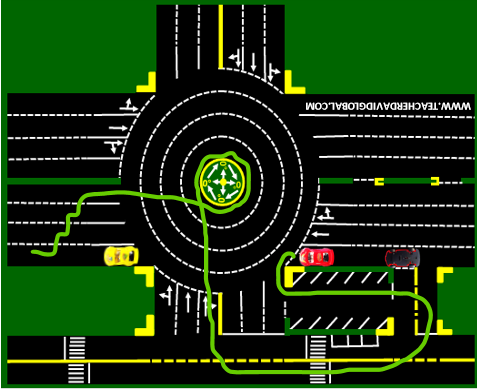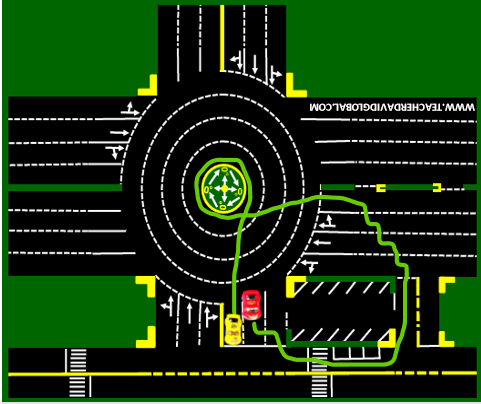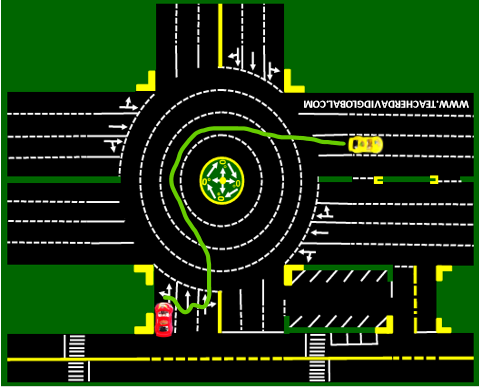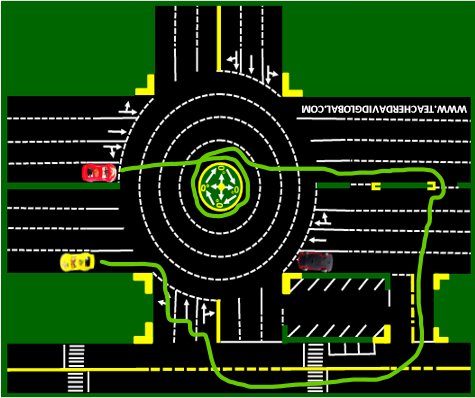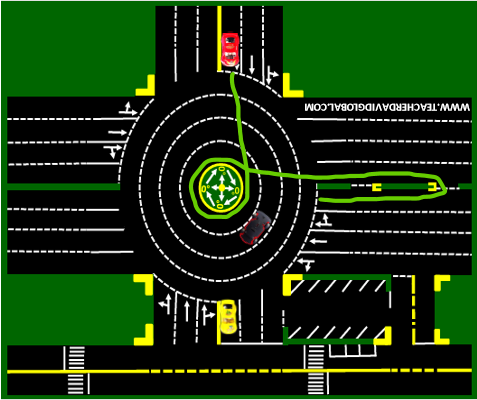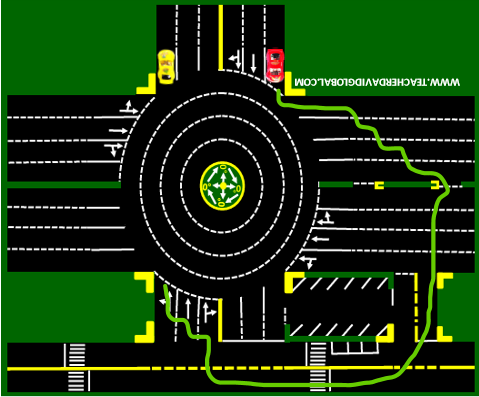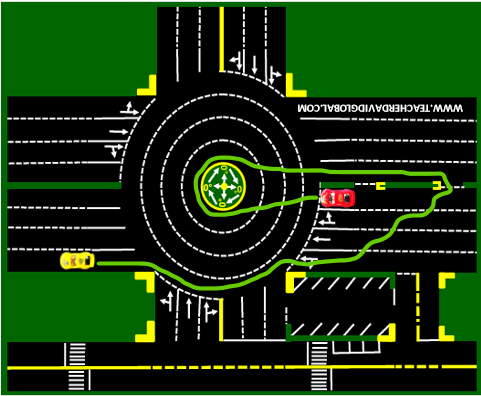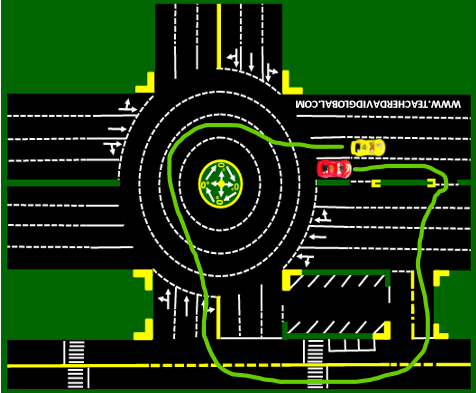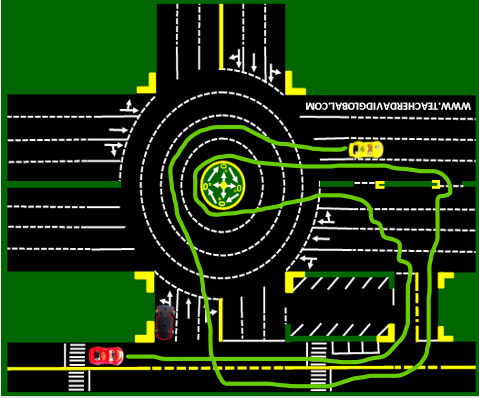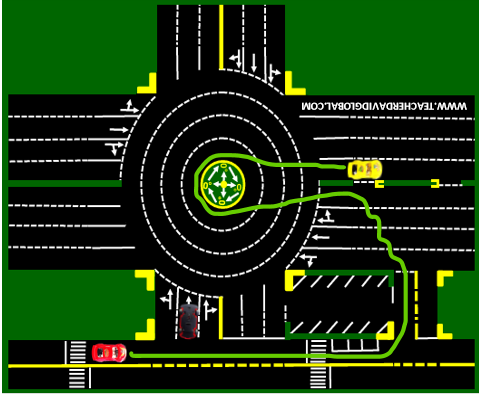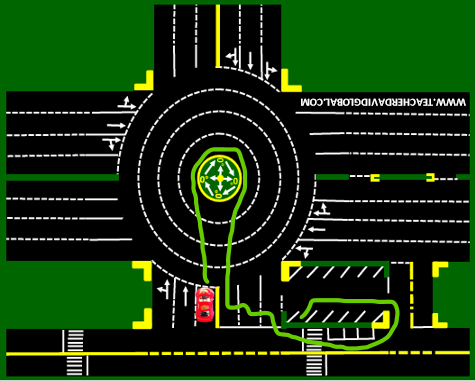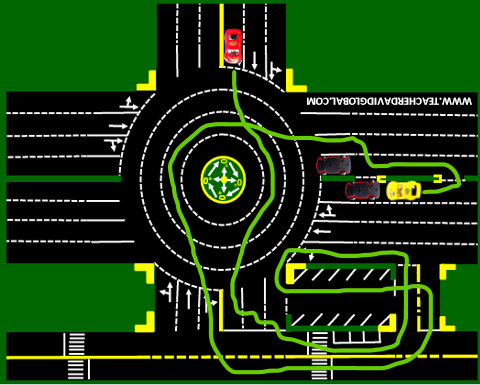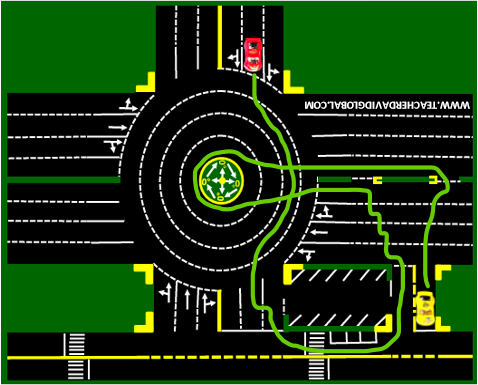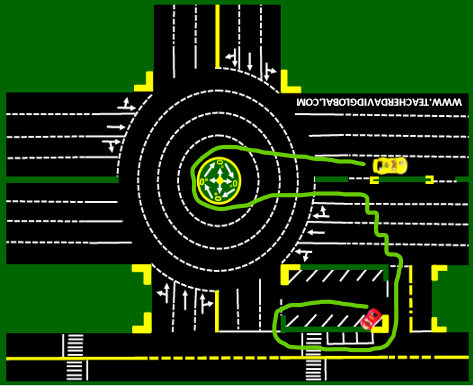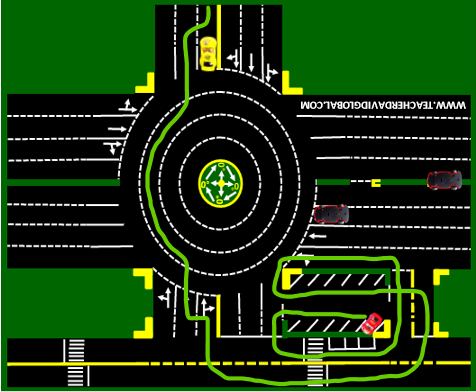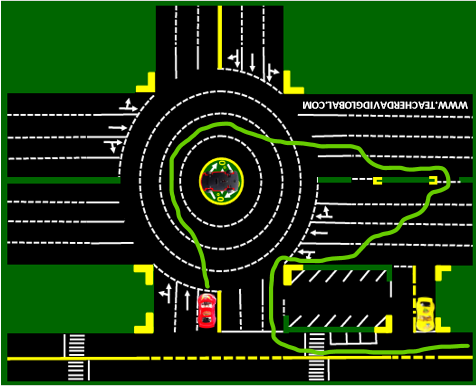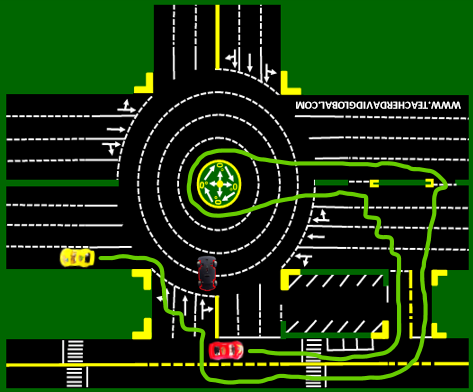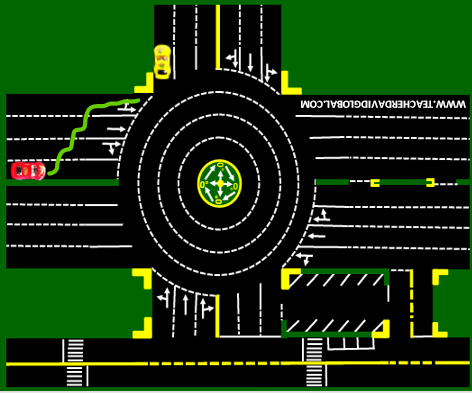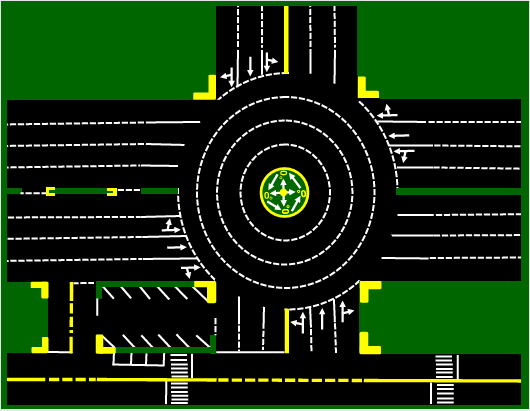 Model Town Board (M.T.B)
Model Town Board (M.T.B)
MODEL TOWN BOARD (M.T.B)
M – Model/ Modern
T – Town/ Traffic / Theory
B – Board
• This is a simple representation/illustration of all road
networks in East Africa (Kenya, Uganda and Tanzania)
on a board.
FEATURES OF MODEL TOWN BOARD
1) Roundabout – We join the roundabout clockwise or at the
aspect of keeping left in East African countries.
2) One-way traffic – (Highways) a road with more than two
lanes per side, moving in opposite direction and it’s divided
by white continuous/broken lines.
3) Two-way traffic – A road with two lanes or single lane per
side where the traffic moves in opposite direction and it’s
divided into two by a yellow continuous/broken line.
4) Parking zones – (angle parking and flush parking)
5) Pavement/Central reserve – A part at the Centre of one
way traffic, 4 lanes road. (Major road)
6) Central line – (At the Centre of minor road – 3 lanes road
highway.
7) Pedestrian Crossing -They are on the two-way traffic.
8) Green field – This is made for future expansion of roads.
9) Yellow kerbs – yellow markings at the green field
10) U –turn – At the pavement when changing direction.
11) Exit from main road – (at the pavement/U-turn towards
two-way traffic road.
12) Stop sign – Continuous lines approaching two-way traffic
from parking, one-way and two-way traffic roads on M.T.B
13) Give way sign – Broken line approaching one-way traffic
road from two-way traffic road and roundabout from all
directions.
14) Dual carriage traffic road – A road with two lanes per side
moving in opposite direction. (This type of road is not
found on the M.T.B.).
15) Entry to the parking – (yellow marked towards direction
of traffic).
16) Road markings i.e., Arrows that show direction that each
lane leads to.
RULES OF M.T.B
1. Use the shortest and most correct route without using
parking.
2. Use the longest and most correct route without using
parking.
3. Use parking as a route when there is no any other route
possible. Use parking as the last option.
ROUNDABOUT
• This is a circular junction where the traffic moves in from
different directions to different directions clock-wise
without causing accidents or collisions.
RULES OF A ROUNDABOUT
• No stopping
• No parking
• No waiting
• No overtaking/ No changing lane.
MISTAKES MADE AT THE ROUNDABOUT
• Approaching roundabout in the wrong lane.
• Exiting roundabout in the wrong lane.
• Stopping at the roundabout.
• Changing lane at the roundabout.
• Wrong observation of the traffic lights.
PARTS OF A ROUNDABOUT
• Spaces (1, 2 & 3 counting from the outermost).
• The innermost lane (lane 4).
• The traffic Island – The part at the Centre of a roundabout
that regulates/controls the traffic movement clockwise.
• The yellow marking around the traffic island is called the
line of funnel.
NB: The biggest roundabout in East Africa is the Globe Cinema’s in Kenya.
RULES OF A YELLOW KERB
• No stopping
• No waiting
• No parking
SPACES (1, 2 & 3)
• For you to be at the roundabout, you must have come from
the lanes approaching on either major road (with 4 lanes)
or minor road (with 3 lanes)
• We count lanes from the left towards the traffic flow of
minor road or major road.
• Minor road has three lanes approaching the roundabout
crossing straight to the other side.
• All first lanes approaching the roundabout on major and
minor roads have two options indicated by arrows drawn
on them (Go straight or turn left).
• All second lanes approaching the roundabout on major or
minor roads have one option only indicated by the arrows
on them. (Go straight only).
• Third lanes on the minor roads approaching the
roundabout have five options.
• The first two options are indicated by the arrows on them
(Go straight or turn right)
• Other three options (option 3, 4 & 5) go by angles at the
innermost lane from 90°, 180° and 270° respectively after
0°.
• Third lanes on major roads have two options only
indicated by arrows on them. (Go straight or turn right).
• Fourth lanes of major roads have 4 options which go by
angles at the innermost lane of the roundabout from 90°,
180°, 270° and 360° respectively after 0° angle.
NB: There is no 0° direction.
HOW WE USE SPACES (1, 2 & 3) & INNERMOST LANE
• From first lanes we use first space clockwise and exit to
first lanes as per options (go straight or turn left)
• NB: All first lanes options on minor or major roads are the
same.
• From second lanes we join second space and exit to
second lanes as per the only option (go straight only)
NB: All 2nd lane options on minor and major
roads are the same.
MINOR ROAD CODE (2:1:5)
• From third lane of minor road, we join third space
clockwise for the first two options only and exit to third
lanes as per options (go straight or turn right)
• First option joins third space clockwise and exits to third
lane straight to minor road.
• Second option joins third space clockwise and exits to
third lane to the right to major road
• The remaining three options of third lane (option 3, 4
& 5) join the innermost lane clockwise and go by angles
from 90°,180° and 270° respectively after 0°
• Third option joins the innermost lane clockwise. We
count the first point as 0°and then exit at 90°, right side
to the fourth lane major road near the pavement.
• Fourth option joins the innermost lane clockwise. We
count the first point as 0°, turn to 90° and then exit at 180°,
opposite to the third lane innermost near the central
line.
• Fifth option joins the innermost lane clockwise. We
count the first point as 0°; turn to 90°, 180° and then exit
at 270° left side to the fourth lane major road near the
pavement.
MAJOR ROAD CODE (2:1:2:4)
First lane has 2 options:
• First option joins first space clockwise and exit to the first
lane of major road straight
• Second option joins first space clockwise and exit to first
lane of minor road to the left.
• Second lane has one option only that joins second space
clockwise and exits to second lane of major straight.
• Third lane has two options only.
• First option joins third space clockwise and exits to third
lane of major road straight.
• Second option joins third space clockwise and exits to
second lane of minor road to the right.
NB: Major Road has four lanes and minor road has three
lanes. Because they don’t balance, when driving the
second option of third lane major to minor, we add an
imaginary lane to the minor, making second lane the
third lane and third lane the fourth lane so as to accommodate / create space for the first option of fourth lane major road.
• Fourth lane has four options that join the innermost
lane clockwise and go from 90°, 180°, 270°and 360°
respectively after 0°.
• First option joins innermost lane; we count 0° and exits at
90° to third lane of minor road to the innermost lane
near the central line to the right.
• Second option joins the innermost lane clockwise and
counts its 0°, turns 90° and exits at 180° to major road
fourth lane opposite near the pavement.
• Third option joins the innermost lane clockwise and
counts its 0°, turns 90°, and exits at 270° to third lane of
minor road to the left near the central line.
• Fourth option joins innermost lane clockwise and counts
its 0°, turns 90°, 180°, 270° and exits at 360° (where the 0°
begins) to fourth lane of major road straight.
WHAT TO DO AND NOT TO DO DURING EXAM
• Before you drive any toy car from one point to another on
the model town/ theory board, one should consider;
• Pay attention to how you join the lanes when approaching
a junction to a roundabout or another road.
• As you apply all the aspects keenly and strictly
remember to speak clearly and boldly. Without doing this
the examiner has authority to discontinue you at the test.
• Types of vehicles stationed on the theory board for
questions.
• A stationed / stationery vehicle – this is a vehicle that is
and will never be in motion or be driven although you have
to obey the aspect of the theory.
NTSA MODEL TOWN BOARD QUESTIONS
















